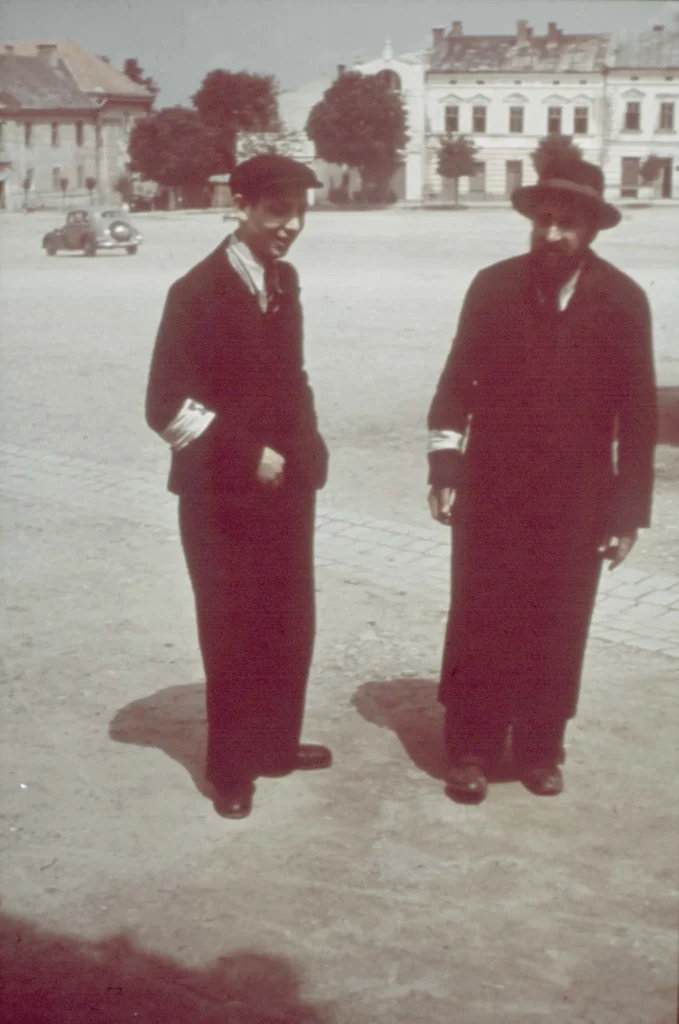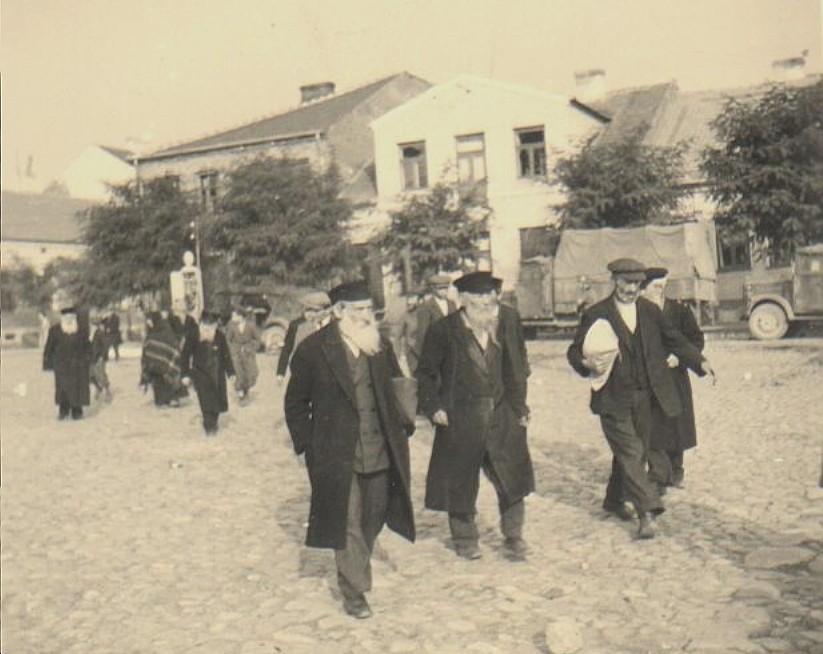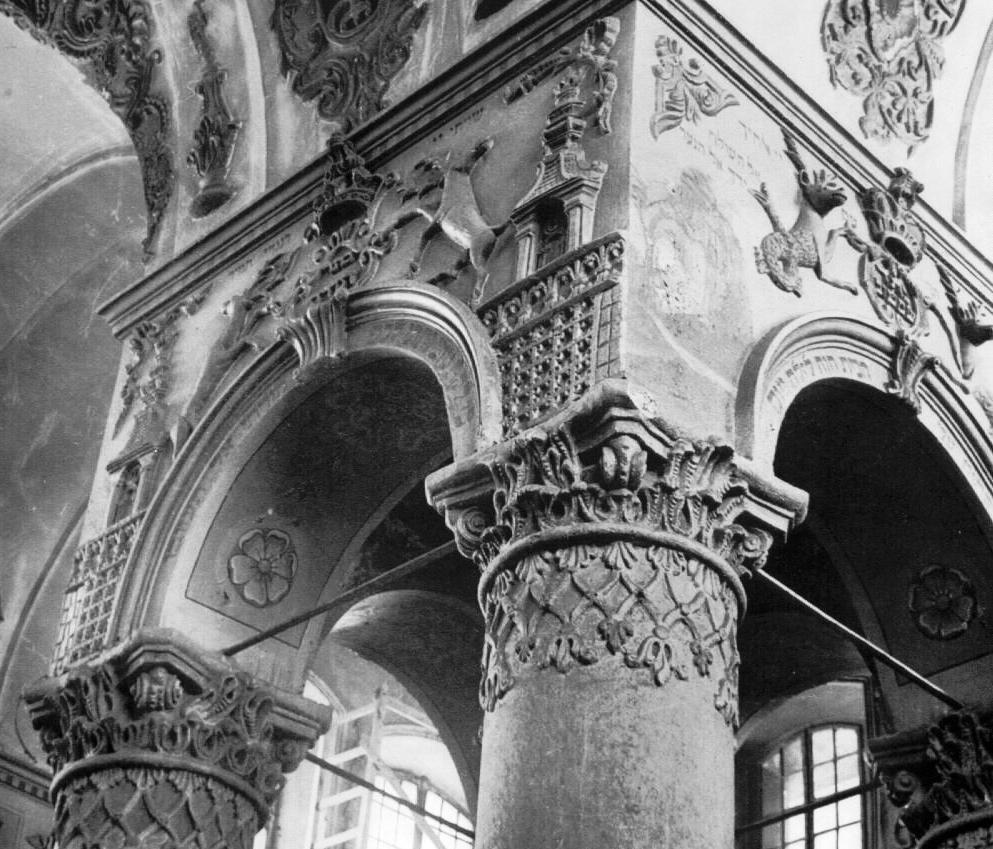Lancut
85 years since its destruction
By: Yaakov Rosenfeld
Lancut, an ancient Jewish town, was home to Jews for many years. The Chozeh (Seer) of Lublin previously lived in Lancut before moving to Lublin. The Bnei Yisaschar rabbi also lived in Lancut, as did other great and righteous Jews.
Prior to the Holocaust, 2750 Jews lived in Lancut. Of these, only about 900 survived, those who fled to the Soviet Union at the start of the war.

Jews in Lancut during the Holocaust, wearing the star of David armbands
Virtual tour of Lancut: https://lancut.wkraj.pl/html5/index.php?id=37772#44154/335
Eighty-five years have passed since the destruction of Lancut, and today there are no longer many people for whom the name and memory of the magical town cast a spell as they did in years past.
Lancut was a special town. Its lifestyle was exceptional. For many years after the destruction, former Lancut residents, both in Israel and in America, were in close contact. The Association of Former Lancut Residents was dominant in the lives of the residents of the city and and its survivors. Now that there are almost no Jews left who remember Lancut in its glory, we will try to remember its good days, walk its streets and tour, metaphorically, the beautiful and magnificent Beit Midrash (study hall), which is one of the only ones that survived, and is still standing.
The lives of the Jews of Lancut were not always easy. Like the entire Jewish diaspora living in Eastern Europe, the Jews of Lancut experienced difficult times. Economic decrees, persecutions, blood libels, and other issues sometimes visited Lancut. Severe fires also occurred there and wreaked havoc on the town, but the Jewish community was happy with their lot, working for their livelihood and, most importantly, worshipping their Creator with love and devotion. The synagogues of Lancut were always full of people. Old and young Jews studied together, their faces beaming. The synagogues were filled with prayers at all hours of the day. Charity and aid organizations worked to lend a helping hand to anyone in need, and educational institutions for boys and girls raised flocks of students, generation after generation. Jewish livelihood in Lancut provided what Jewish livelihood could provide in those days, for some less and for some more. The town market was active and Yiddish was its language. The bathhouses were, as usual, hot and full of steam, and Jews sweated out the sweat of the weekdays in them a short time before Shabbat began, and emerged clean and polished for Shabbat. Shabbat in chassidic Lancut was full of light and joy. The synagogues were illuminated and communal singing emanated from their windows.

Jews in the town on their way to synagogue
Next to the Great Synagogue, which was not particularly impressive on the outside but was filled with splendour on the inside, was another, smaller building, and around it was an aura of nostalgia and holiness. This was the historic synagogue of the Chozeh of Lublin, whose light shone from this town before moving to Lublin. The great Rabbi Naftali of Ropshitz, one of the fathers of chassidism, passed away in Lancut and is buried there. His grave was a magnet for many who came to visit the holy resting place, including some of the greatest and most righteous people of the generation.
Lancut was a warm, lively, and joyful chassidic city almost from the time of the founding of chassidism. The famous Rabbi Elimelech of Lizhensk visited it frequently, and he had many chassidic followers there. The pure stamp of the righteous and holy was imprinted on Lancut until its bitter end, eighty-five years ago.
Here is a description of the life of the “Kloizim” (small study halls) and the “Shtieblach” (small synagogues) in Lancut:
One thing was very worthy in Lancut…the sound of Torah and prayer never ceased there day nor night. It was always full of life, joy, and elation. The kloizim in Lancut were the center of religious Judaism, the city’s strength and wealth. The most respected men in the city would pray and study in the kloizim, which were always open for Torah and prayer. On the long winter nights, when snowstorms, frost, and storms raged outside, they would come to the kloizim early. As early as two o’clock, before sunrise, a large number of young and mature men could be found studying diligently there, and those who arrived late at five o’clock in the morning, could not find places to sit.
Throughout the day, the kloizim were filled with young men, who sat at the table of their fathers-in-law, as well as with chedder students. Everyone flocked to the kloizim and batei midrash (study halls).
In the evenings, it was like a boiling fire with a crowd of worshippers and Torah students and just Jews who would come to warm themselves by the stoves, and while doing so, would hear words of Torah and recite verses of Psalms.

The covering above the bima (prayer stand) in the synagogue in Lancut
(M.S. Gashuri, Al HaChassidim V’al HaTzadikkim B’Lancut, in Sefer Lancut, pg. 69)
G-d willing, in the coming weeks, we will publish a series of articles on Lancut – about the historical events that left a mark on the town, such as the blood libels and other events; about the interwar period and Count Potocki, a lover of Jews, who was an interesting figure and an integral part of the Jewish life of Lancut; about the historic synagogue, and more.












